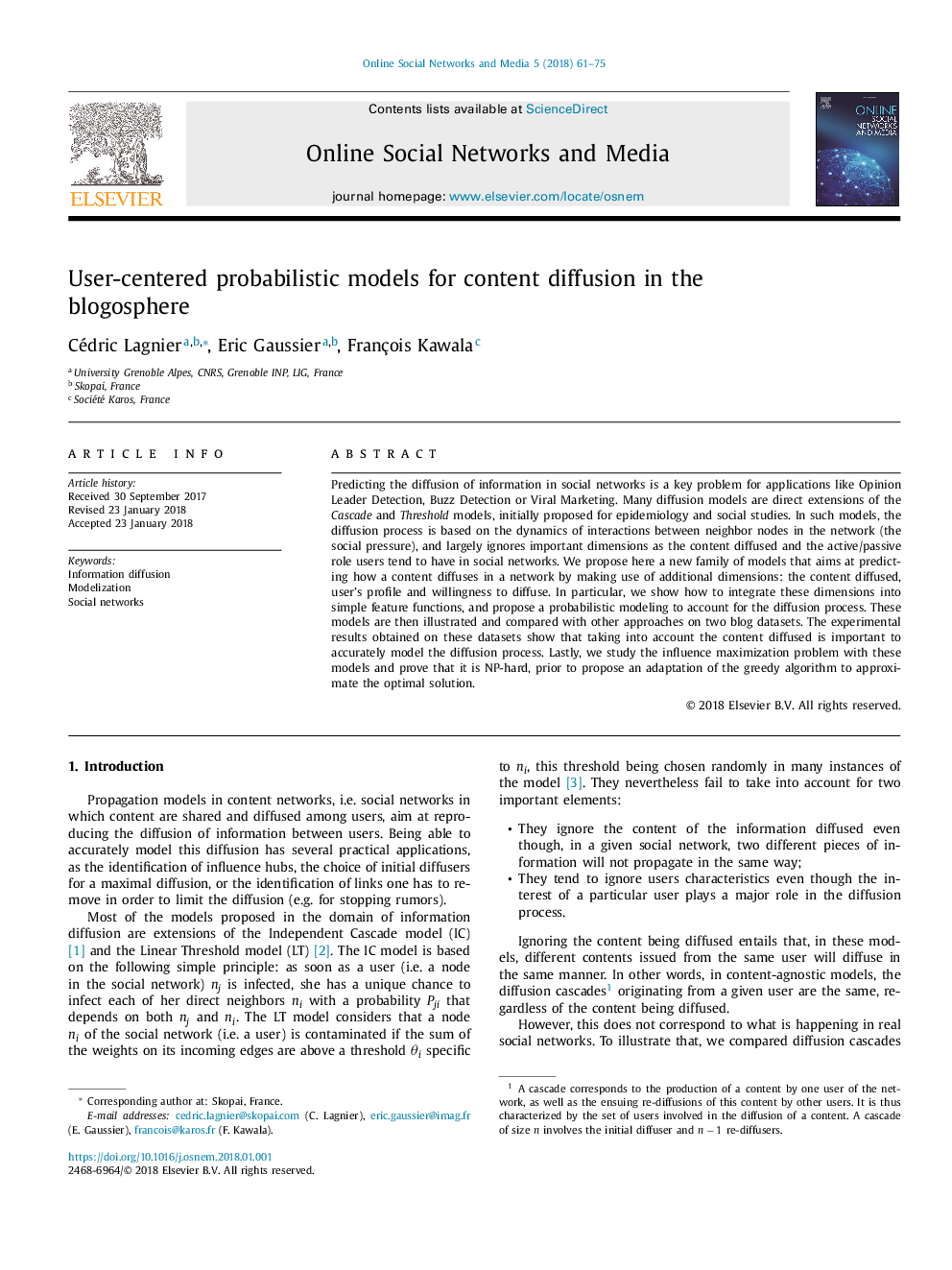| Article ID | Journal | Published Year | Pages | File Type |
|---|---|---|---|---|
| 8917962 | Online Social Networks and Media | 2018 | 15 Pages |
Abstract
Predicting the diffusion of information in social networks is a key problem for applications like Opinion Leader Detection, Buzz Detection or Viral Marketing. Many diffusion models are direct extensions of the Cascade and Threshold
models, initially proposed for epidemiology and social studies. In such models, the diffusion process is based on the dynamics of interactions between neighbor nodes in the network (the social pressure), and largely ignores important dimensions as the content diffused and the active/passive role users tend to have in social networks. We propose here a new family of models that aims at predicting how a content diffuses in a network by making use of additional dimensions: the content diffused, user's profile and willingness to diffuse. In particular, we show how to integrate these dimensions into simple feature functions, and propose a probabilistic modeling to account for the diffusion process. These models are then illustrated and compared with other approaches on two blog datasets. The experimental results obtained on these datasets show that taking into account the content diffused is important to accurately model the diffusion process. Lastly, we study the influence maximization problem with these models and prove that it is NP-hard, prior to propose an adaptation of the greedy algorithm to approximate the optimal solution.
Related Topics
Physical Sciences and Engineering
Computer Science
Computer Networks and Communications
Authors
Cédric Lagnier, Eric Gaussier, François Kawala,
